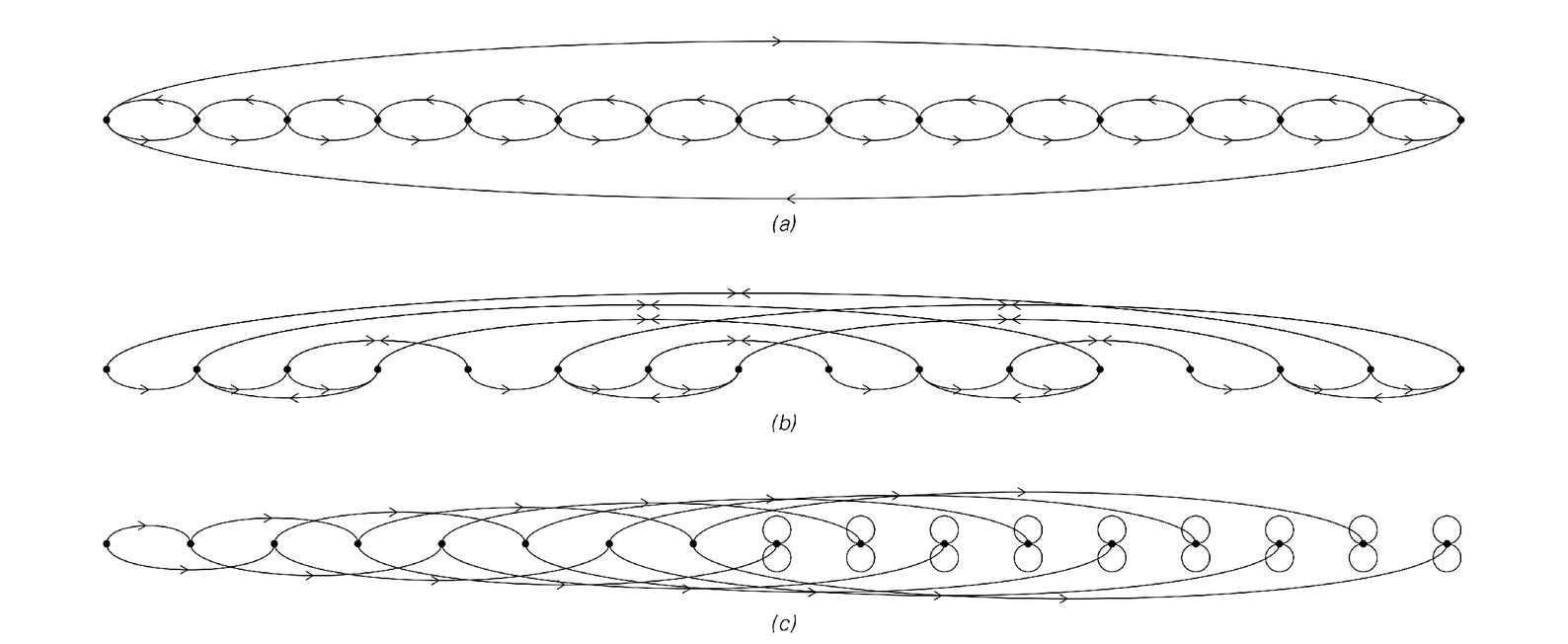of a particular network, as in the second and third cases below, it more readily allows comparison between different networks.
In setting up rules for network systems, it is convenient to distinguish the two connections that come out of each node. And in the pictures below one connection is therefore always shown going above the line of nodes, while the other is always shown going below.
The pictures on the facing page show examples of evolution obtained with four different choices of underlying rules. In the first case, the rule specifies that the "above" connection from each node should be rerouted so that it leads to the node obtained by following the "below" connection and then the "above" connection from that node. The "below" connection is left unchanged.
The other rules shown are similar in structure, except that in cases (c) and (d), the "above" connection from each node is rerouted so that it simply loops back to the node itself.
In case (d), the result of this is that the network breaks up into several disconnected pieces. And it turns out that none of the rules I consider here can ever reconnect these pieces again. So as a consequence, what I do in the remainder of this section is to track only the piece that includes the first node shown in pictures such as those

Networks from previous pictures laid out in a uniform way. Network (a) corresponds to a one-dimensional array, (b) to a two-dimensional array, and (c) to a tree. In the layout shown here, all the networks have their nodes arranged along a line. Note that in cases (a) and (b) the connections are arranged so that the arrays effectively wrap around; in case (c) the leaves of the tree are taken to have connections that loop back to themselves.



